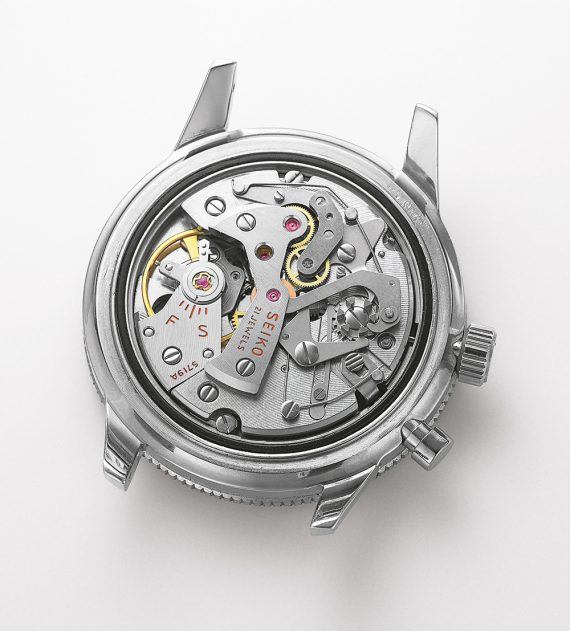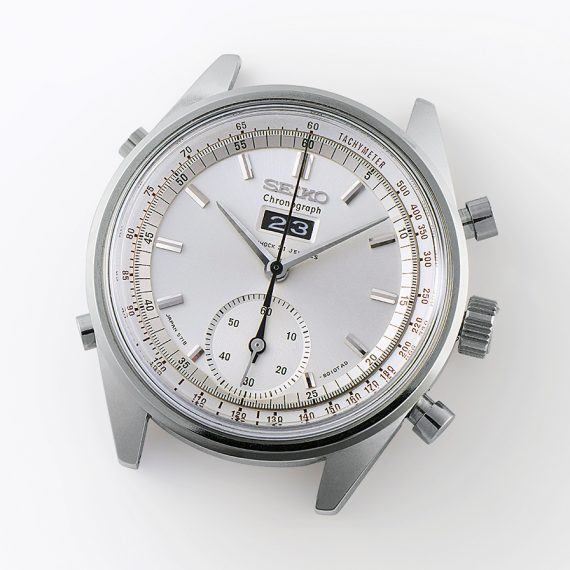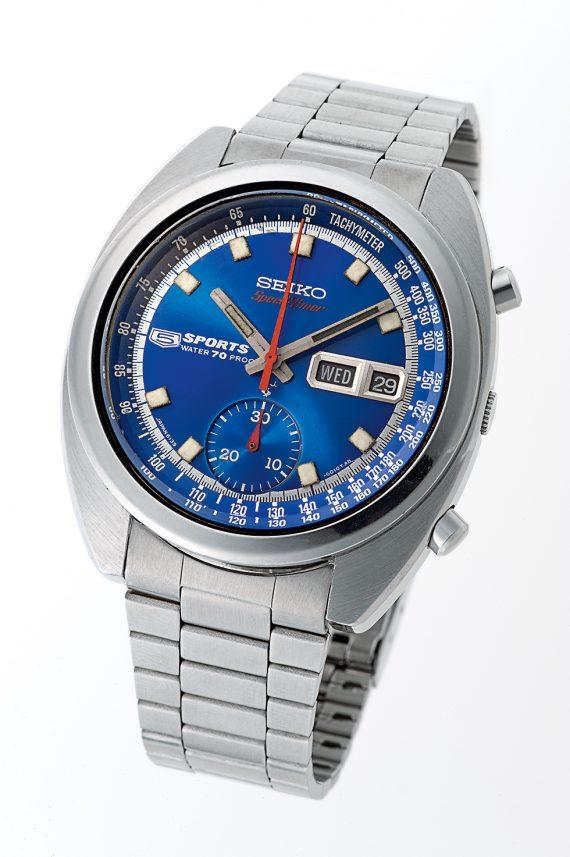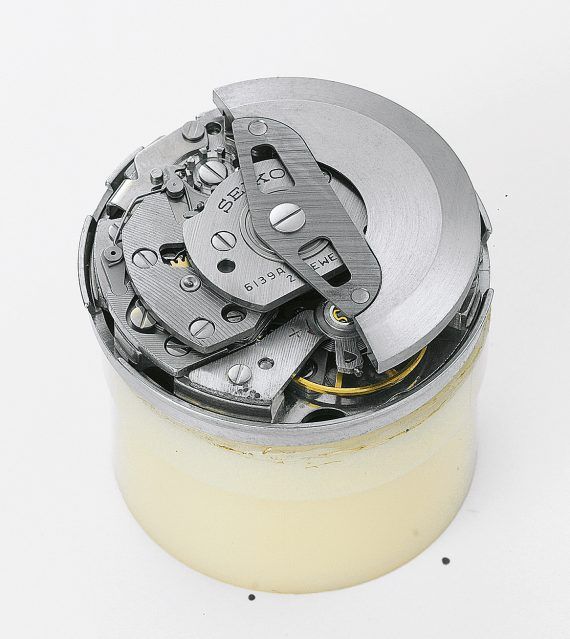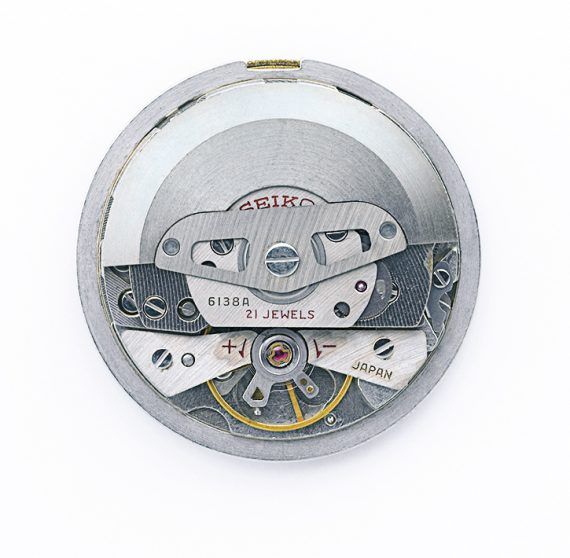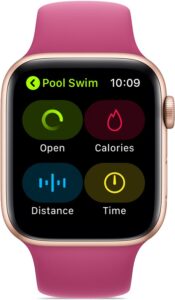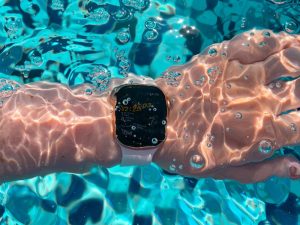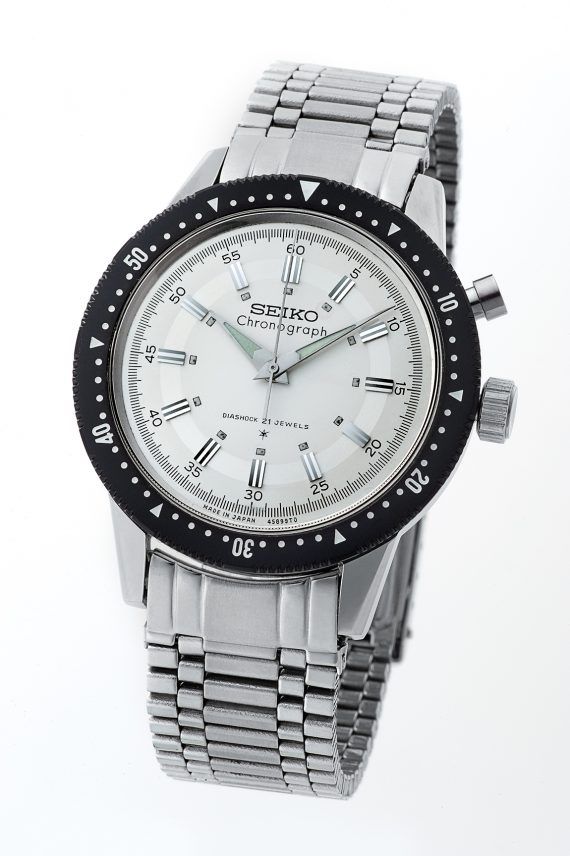
We survey Seiko’s half-century-plus of mechanical chronographs in this comprehensive historical feature from the WatchTime archives. Scroll down to discover the Japanese brand’s contributions to the world of chronograph wristwatches.
CALIBER 5719: JAPAN’S FIRST WRIST CHRONOGRAPH
When Seiko set out to design Japan’s first wristwatch chronograph, its goal was to produce a watch that was as much status symbol as timing device. Suwa Seikosha, i.e., Seiko’s factory in the city of Suwa, developed the watch, which was launched in time for the 1964 Summer Olympics. It was powered by the 12-ligne, hand-wound Caliber 5719. The salient features of this 6.1-mm-thick movement included a single button to trigger the chronograph’s functions, horizontal coupling, and a column wheel to control the start, stop and return-to-zero functions. The balance was paced at 5.5 hertz, or 39,600 vph. With the chronograph mechanism switched on, the movement would run for 38 hours. The case was made of steel and was 38.2 mm in diameter and 11.2 mm thick.
The watch had no elapsed-time counter, so Seiko equipped it with a rotating bezel calibrated in 1-minute increments. To measure an interval longer than 1 minute, the user started the chronograph and then rotated the bezel until the tip of the large triangle was directly opposite the tip of the minutes hand. After he stopped the chronograph at the end of the interval, he read the elapsed minutes using the rotating bezel and the elapsed seconds using the regular dial. The problem with this first chronograph series was that the bezel had a tendency to break. Seiko rectified this by replacing the fragile bezel with a sturdy, steel one.
Seiko brought out another version of the movement, the 6.4-mm-thick Caliber 5718, in a limited-edition steel watch that today is extremely rare and highly coveted by collectors. What looks like a date window at 12 o’clock is actually a golf-stroke or point counter, operated by means of the two buttons on the left side of the case. Another special feature is a subdial at 6 o’clock that doubles as an elapsed-minutes counter and a running-seconds display. There is a tachymeter scale along the dial’s periphery.
CALIBER 6139: FIRST AUTOMATIC CHRONOGRAPH ON THE MARKET
It’s well known that Swiss companies were working feverishly in the 1960s to develop a self-winding chronograph, but no one knows whether their Japanese competitors knew about these efforts. Seiko started working on the self-winding Calibers 6139 and 6138 in 1967, even though by then much of the watch industry was focusing its attention on quartz technology. It took the company just two years to develop Caliber 6139. Remarkably small, it had a diameter of 27.4 mm and a height of 6.5 mm. Its mainspring was a ball-borne, center-mounted rotor, which worked in conjunction with Seiko’s innovative Magic Lever (still in use today), a click-winding system that can use the rotor’s kinetic energy regardless of which way the rotor turns. After being fully wound, the watch would run for 36 hours with the chronograph switched on.
To improve the rate performance, the caliber’s developers gave the balance a frequency of 3 Hz (21,600 vph), instead of the then-standard 2.5 Hz (18,000 vph). Other technical specifications included a column wheel to control the chronograph’s functions, a counter for 30 elapsed minutes at the “6,” and vertical coupling. This last feature was quite innovative at the time: its debut here significantly predated its premiere in Swiss watches. In addition to a date display, Seiko also equipped this model with a bilingual (Japanese and English) indicator for the day of the week.
The new movement, housed in a watch called the 5 Speed-Timer, appeared in stores in mid-May of 1969. Seiko therefore won the race to bring the first automatic chronograph to market. (Two competitors, Zenith and a consortium of other Swiss companies − Breitling, Heuer, Hamilton-Buren and Dubois Dépraz – brought automatic chronographs to market later in the year.) Caliber 6138, which was 7.9-mm thick, debuted in 1970. It differed from Caliber 6139 because it had a running seconds hand and a counter for 12 elapsed hours. Seiko also incorporated Caliber 6138 into a so-called “bullhead” model, similar to Omega’s manual-wind bullhead, with pushers at the top of the case instead of on the side.
Incidentally, Seiko can also claim the honor of having sent the first self-winding chronograph into outer space. When U.S. astronaut William Reid Pogue flew aboard the Skylab-4 mission in 1973 to 1974, he wore a watch (nowadays nicknamed the “Pogue Seiko”) powered by Caliber 6139.

